Abstract
Cell suspension cultures of tomato, Lycopersicon esculentum Mill. cv VFNT-Cherry, produce phytochelatins (poly[γ-glutamylcysteinyl]glycines) when exposed to cadmium. The synthesis of these peptides is accompanied by a decline in cellular levels of glutathione. Buthionine sulfoximine, an inhibitor of glutathione synthesis, inhibits the sustained production of phytochelatins. However, phytochelatin synthesis can occur in the presence of buthionine sulfoximine provided that sufficient glutathione is available. These results indicate that glutathione is a substrate for phytochelatin synthesis. The protein synthesis inhibitor cycloheximide does not affect the initial production of phytochelatin.
Full text
PDF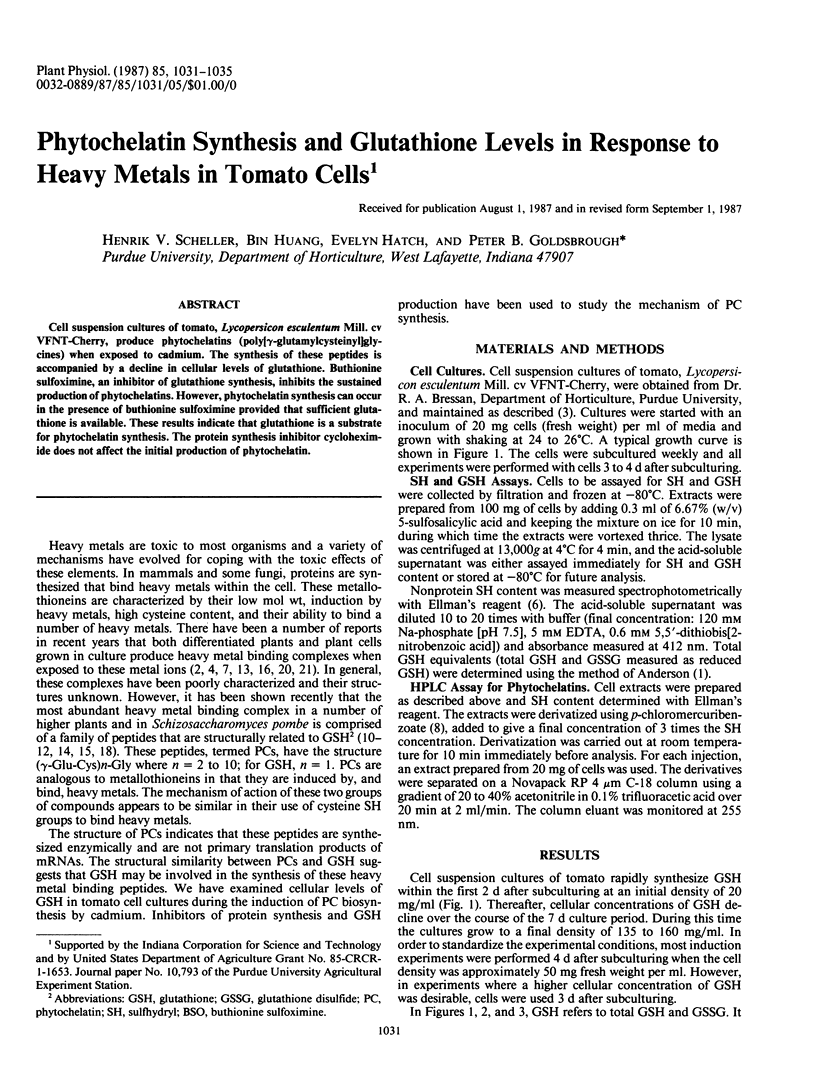
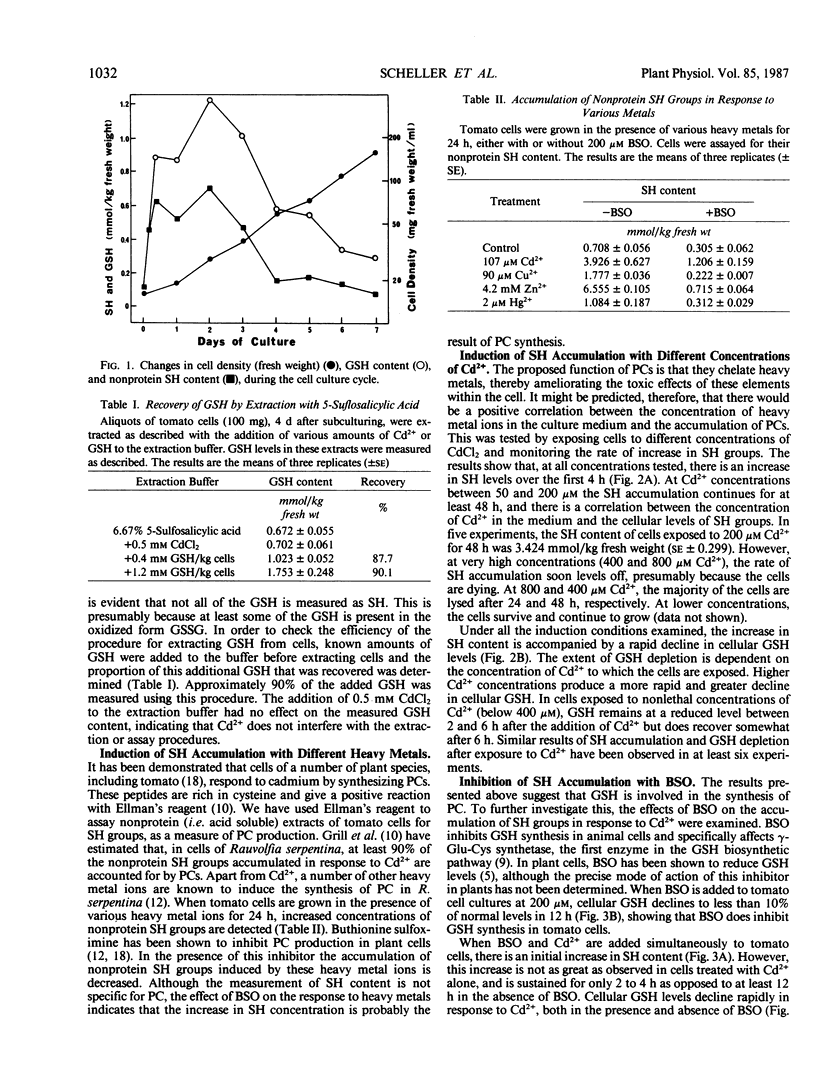
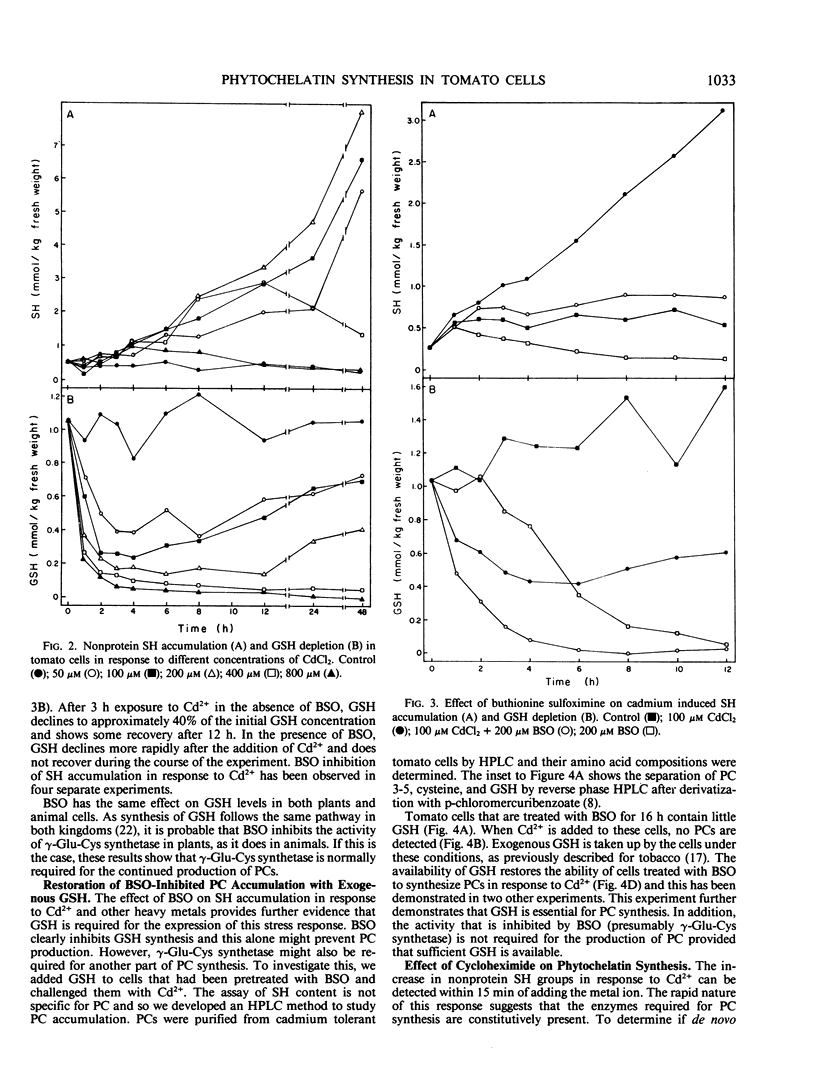
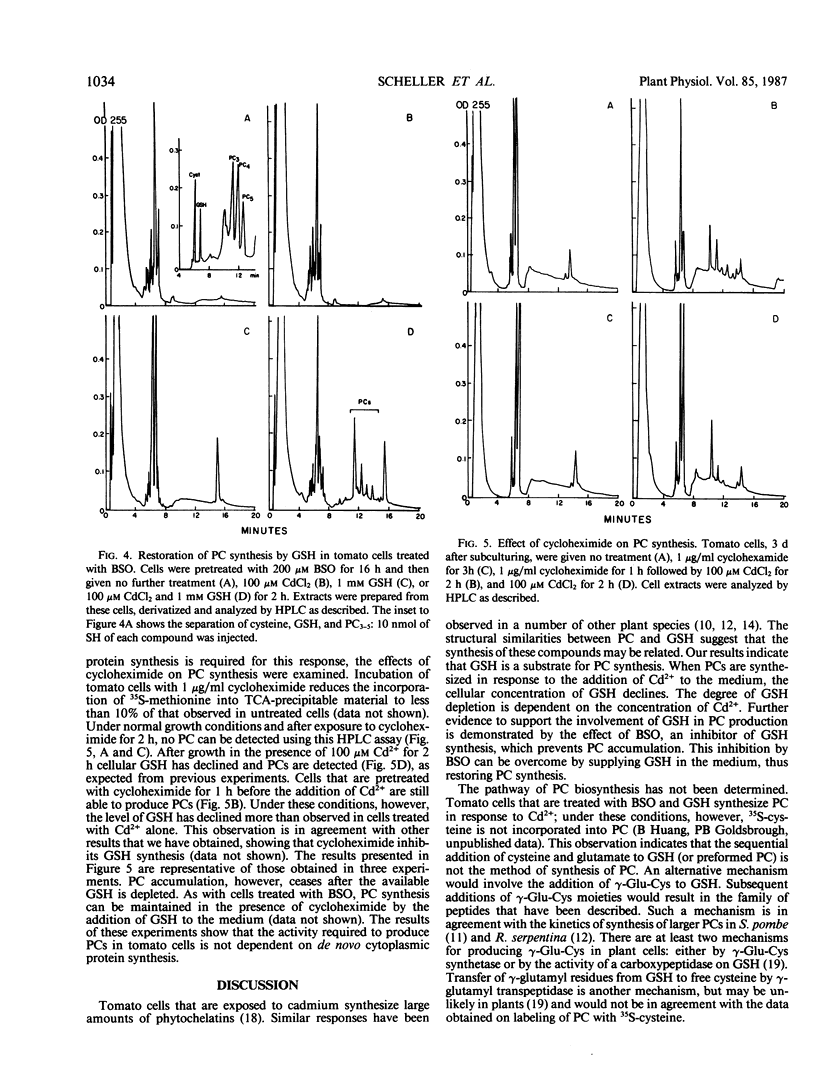
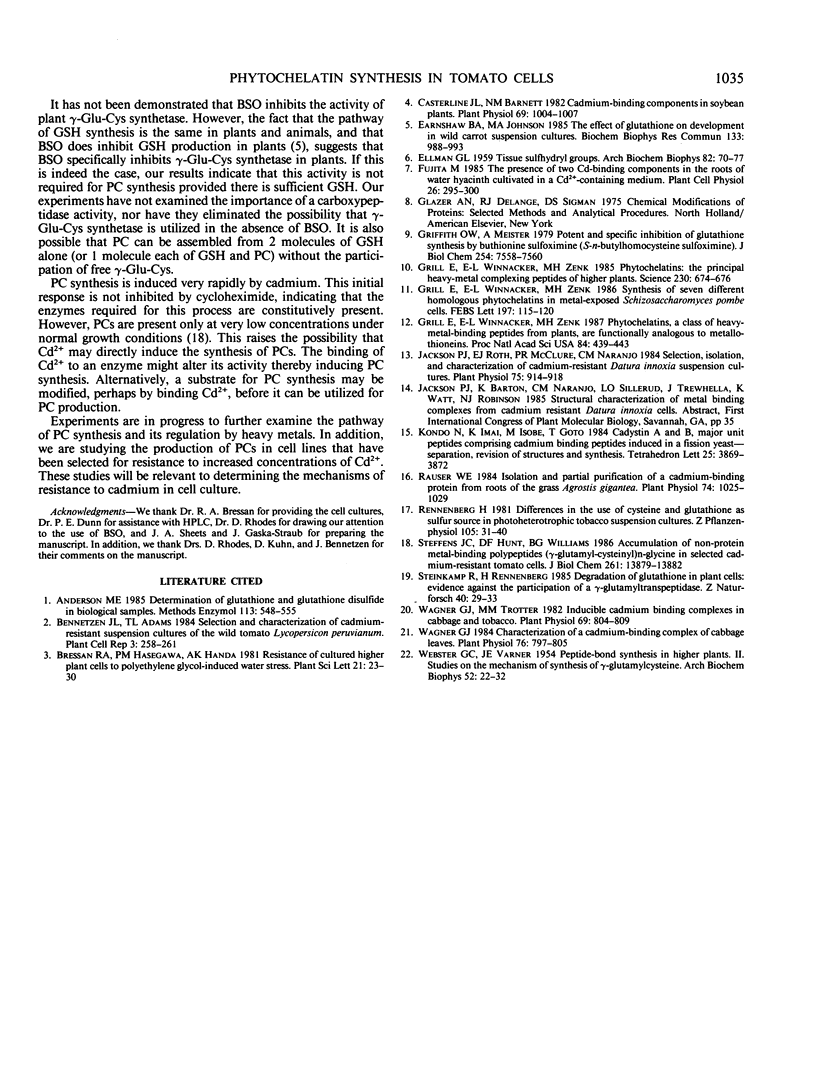
Selected References
These references are in PubMed. This may not be the complete list of references from this article.
- Anderson M. E. Determination of glutathione and glutathione disulfide in biological samples. Methods Enzymol. 1985;113:548–555. doi: 10.1016/s0076-6879(85)13073-9. [DOI] [PubMed] [Google Scholar]
- Casterline J. L., Barnett N. M. Cadmium-binding components in soybean plants. Plant Physiol. 1982 May;69(5):1004–1007. doi: 10.1104/pp.69.5.1004. [DOI] [PMC free article] [PubMed] [Google Scholar]
- ELLMAN G. L. Tissue sulfhydryl groups. Arch Biochem Biophys. 1959 May;82(1):70–77. doi: 10.1016/0003-9861(59)90090-6. [DOI] [PubMed] [Google Scholar]
- Earnshaw B. A., Johnson M. A. The effect of glutathione on development in wild carrot suspension cultures. Biochem Biophys Res Commun. 1985 Dec 31;133(3):988–993. doi: 10.1016/0006-291x(85)91233-1. [DOI] [PubMed] [Google Scholar]
- Griffith O. W., Meister A. Potent and specific inhibition of glutathione synthesis by buthionine sulfoximine (S-n-butyl homocysteine sulfoximine). J Biol Chem. 1979 Aug 25;254(16):7558–7560. [PubMed] [Google Scholar]
- Grill E., Winnacker E. L., Zenk M. H. Phytochelatins, a class of heavy-metal-binding peptides from plants, are functionally analogous to metallothioneins. Proc Natl Acad Sci U S A. 1987 Jan;84(2):439–443. doi: 10.1073/pnas.84.2.439. [DOI] [PMC free article] [PubMed] [Google Scholar]
- Grill E., Winnacker E. L., Zenk M. H. Phytochelatins: the principal heavy-metal complexing peptides of higher plants. Science. 1985 Nov 8;230(4726):674–676. doi: 10.1126/science.230.4726.674. [DOI] [PubMed] [Google Scholar]
- Jackson P. J., Roth E. J., McClure P. R., Naranjo C. M. Selection, Isolation, and Characterization of Cadmium-Resistant Datura innoxia Suspension Cultures. Plant Physiol. 1984 Aug;75(4):914–918. doi: 10.1104/pp.75.4.914. [DOI] [PMC free article] [PubMed] [Google Scholar]
- Rauser W. E. Isolation and Partial Purification of Cadmium-Binding Protein from Roots of the Grass Agrostis gigantea. Plant Physiol. 1984 Apr;74(4):1025–1029. doi: 10.1104/pp.74.4.1025. [DOI] [PMC free article] [PubMed] [Google Scholar]
- Steffens J. C., Hunt D. F., Williams B. G. Accumulation of non-protein metal-binding polypeptides (gamma-glutamyl-cysteinyl)n-glycine in selected cadmium-resistant tomato cells. J Biol Chem. 1986 Oct 25;261(30):13879–13882. [PubMed] [Google Scholar]
- WEBSTER G. C., VARNER J. E. Peptidebond synthesis in higher plants. II. Studies on the mechanism of synthesis of gamma-glutamylcysteine. Arch Biochem Biophys. 1954 Sep;52(1):22–32. doi: 10.1016/0003-9861(54)90085-5. [DOI] [PubMed] [Google Scholar]
- Wagner G. J. Characterization of a cadmium-binding complex of cabbage leaves. Plant Physiol. 1984 Nov;76(3):797–805. doi: 10.1104/pp.76.3.797. [DOI] [PMC free article] [PubMed] [Google Scholar]
- Wagner G. J., Trotter M. M. Inducible cadmium binding complexes of cabbage and tobacco. Plant Physiol. 1982 Apr;69(4):804–809. doi: 10.1104/pp.69.4.804. [DOI] [PMC free article] [PubMed] [Google Scholar]


